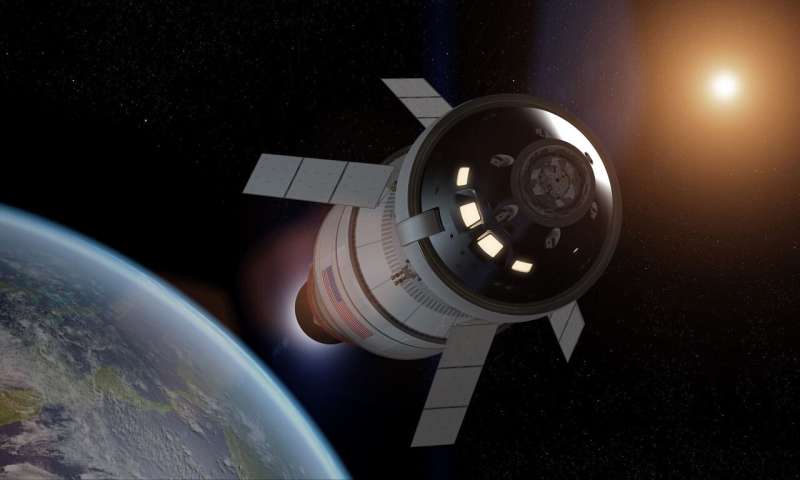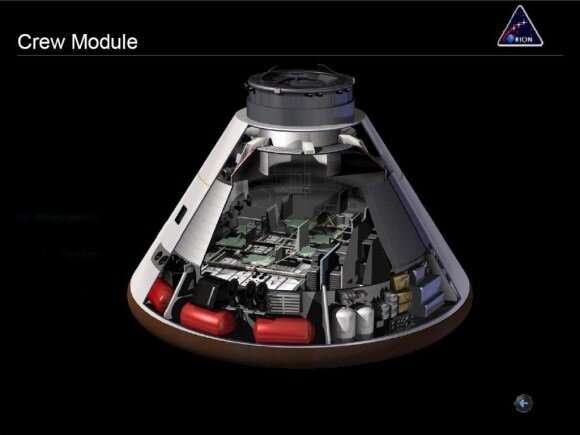This article has been reviewed according to Science X's editorial process and policies. Editors have highlighted the following attributes while ensuring the content's credibility:
fact-checked
trusted source
proofread
How cells could help Artemis astronauts exercise

In 2033, NASA and China plan to send the first crewed missions to Mars. These missions will launch every two years when Earth and Mars are at the closest points in their orbits (Mars Opposition). It will take these missions six to nine months to reach the Red Planet using conventional technology. This means that astronauts could spend up to a year and a half in microgravity, followed by months of surface operations in Martian gravity (roughly 40% of Earth gravity). This could have drastic consequences for astronaut health, including muscle atrophy, bone density loss, and psychological effects.
Aboard the International Space Station (ISS), astronauts maintain a strict exercise regimen to mitigate these effects. However, astronauts will not have the same option while in transit to Mars since their vehicles (the Orion spacecraft) have significantly less volume. To address this challenge, Professor Marni Boppart and her colleagues at the Beckman Institute for Advanced Science and Technology are developing a process using regenerative cells. This work could help ensure that astronauts arrive at Mars healthy, hearty, and ready to explore.
Boppart is a professor of kinesiology and community health at the Beckman Institute and the College of Applied Health Sciences (CAHS) at the University of Illinois Urbana-Champaign (UIUC). Before joining UIUC, Boppart was an officer and aerospace physiologist with the U.S. Air Force who specialized in high-altitude health hazards. Her current research is focused on muscle loss and gain at the molecular level, which she hopes will lead to strategies for recovering strength in circumstances where mobility and exercise are limited.
This situation presents problems considering the impact time spent in microgravity can have on the human body. These physiological effects are well-documented thanks to ongoing studies aboard the ISS, such as NASA's famous Twins Study. As Boppart related in a recent Beckman Institute press release:

"Astronauts can lose up to 20% of muscle mass after just two weeks, and 1-2% of bone mineral density every month. The longer the space travel, the greater the deterioration of tissues and physiological systems in the human body. But even the most intense [exercise] protocols performed in space are not sufficient to overcome the negative impacts of microgravity. Alternatives to traditional exercise, ideally based on exercise principles, are required."
Boppart and her colleagues began investigating the regenerative power of cells for space exploration in response to a Biomedical Research Advances for Space Health (BRASH) solicitation by the Translational Research Institute for Space Health (TRISH)—an institute funded by the NASA Human Research Program. The institute asked researchers to investigate new methods for ensuring astronaut health and performance by enhancing the human body's own maintenance and cellular repair abilities. These methods, they stated, would become part of long-duration exploration missions, including NASA's Artemis program and future crewed missions to Mars.
The mission architecture for Artemis is the Orion spacecraft, which will transport crews of four astronauts to the Moon. This program will send two astronauts to the lunar surface (Artemis III) for the first time since the Apollo 17 mission landed in 1972. However, the long-term aim of Artemis is to establish a program of "sustained lunar exploration and development" that will include the creation of infrastructure—like the Artemis Base Camp and the Lunar Gateway—to facilitate missions to Mars in the coming decade.
The Orion spacecraft has limited volume since it was designed to serve three functions, combining a dormitory, dining hall, and control room. Whereas its total pressurized volume measures 20 cubic meters (690.6 ft3), the habitable space measures only 9 cubic meters (316 ft3) in volume. This leaves little room for resistance and endurance equipment similar to what astronauts have access to on the ISS. Instead, Boppart and her team focused on the cellular activity that occurs within the human body during and after periods of exercise.
When we engage in anaerobic (lifting weights) or aerobic (running, etc.) activities, our bodies react with a "stress response." This consists of chemicals like endorphins being released into the bloodstream to boost the body's ability to remain active. Some of these chemical payloads are wrapped in a protective layer of lipids (fatty cells) known as extracellular vesicles, which are named for their ability to transfer restorative chemicals from cell to cell. Boppart and her team theorize that extracellular vesicles and the chemicals they carry can trigger the restorative effects of exercise, even where no exercise has taken place.
For their research, Boppart and her colleagues were awarded a $1 million grant by TRISH, to be dispersed over the next two years. The broad aim of their study is to use extracellular vesicles generated naturally (from volunteers) and artificially in a lab. When administered to astronauts, these vesicles will replicate the restorative effect of exercise in astronauts and combat the effects of microgravity, all without the need for heavy equipment that takes up a lot of space. As Boppart summarized:
"When we exercise, it's not only our muscles that benefit, but all tissues, including the brain and skin. Our TRISH-sponsored work will directly test the ability of extracellular vesicles released after exercise to protect human health in space. Astronauts are the target population for this funded study, but the result could potentially be used to prevent, maintain, or treat a variety of conditions associated with inactivity and disuse, including aging, disability, or even disease, which would be exceptionally fulfilling."
Provided by Universe Today





















